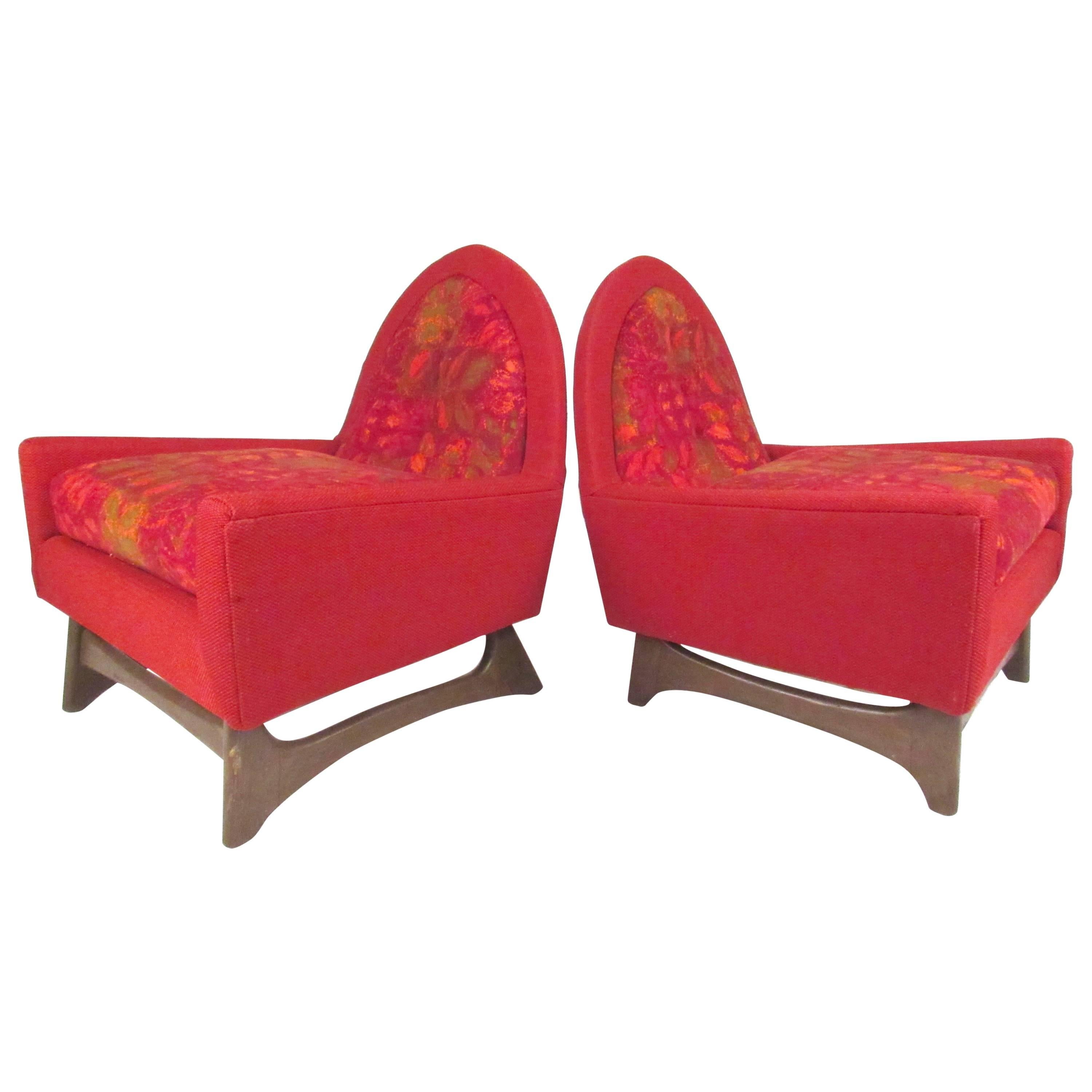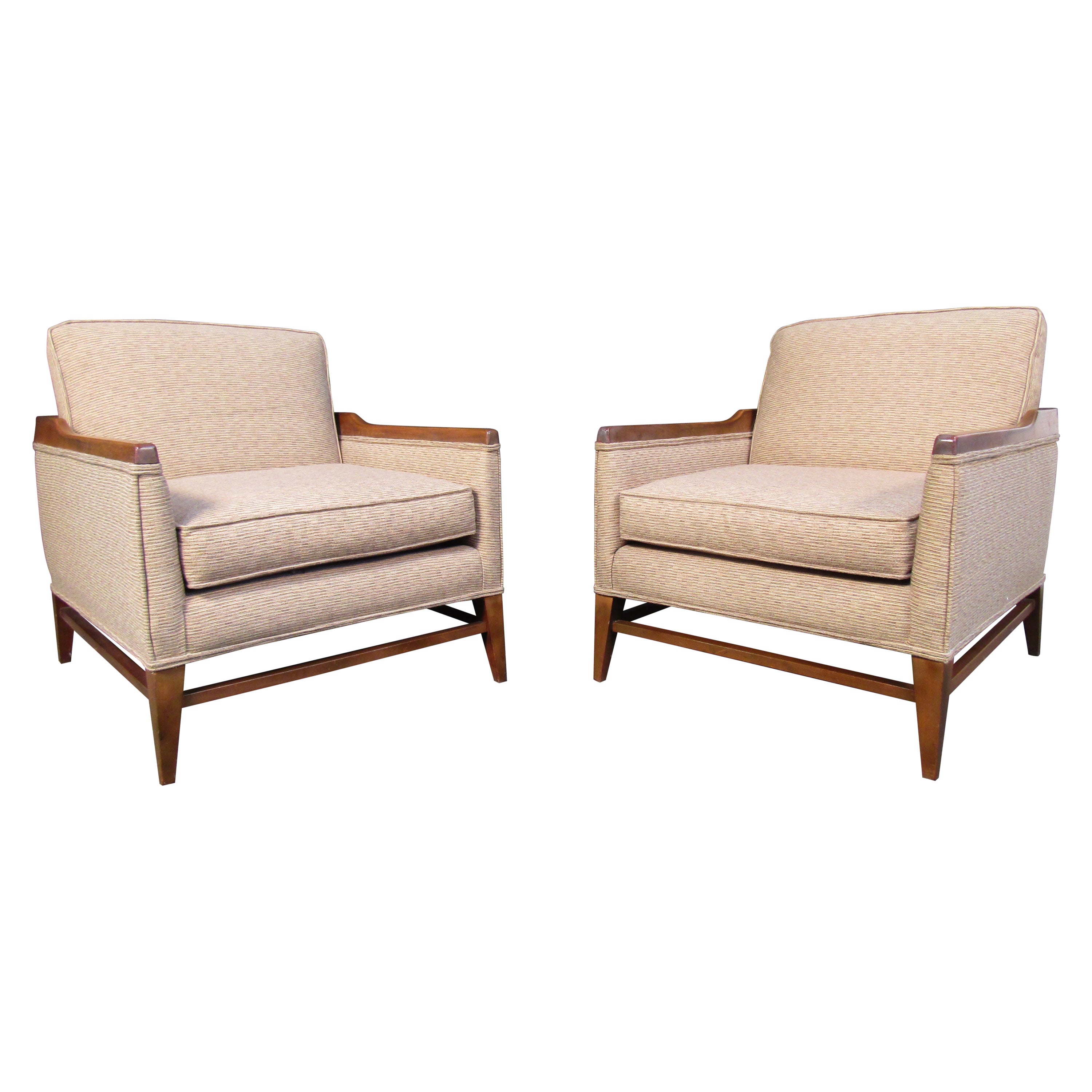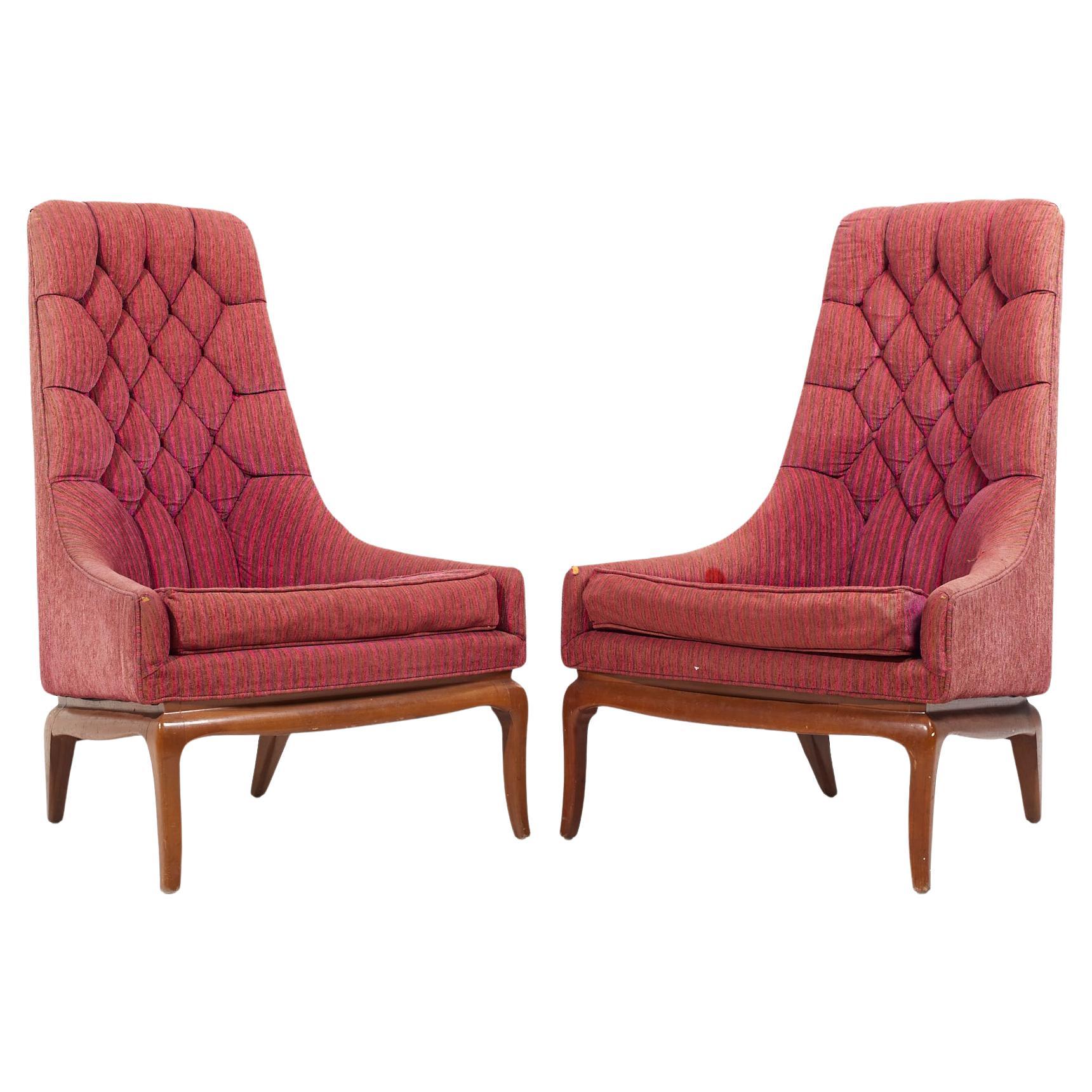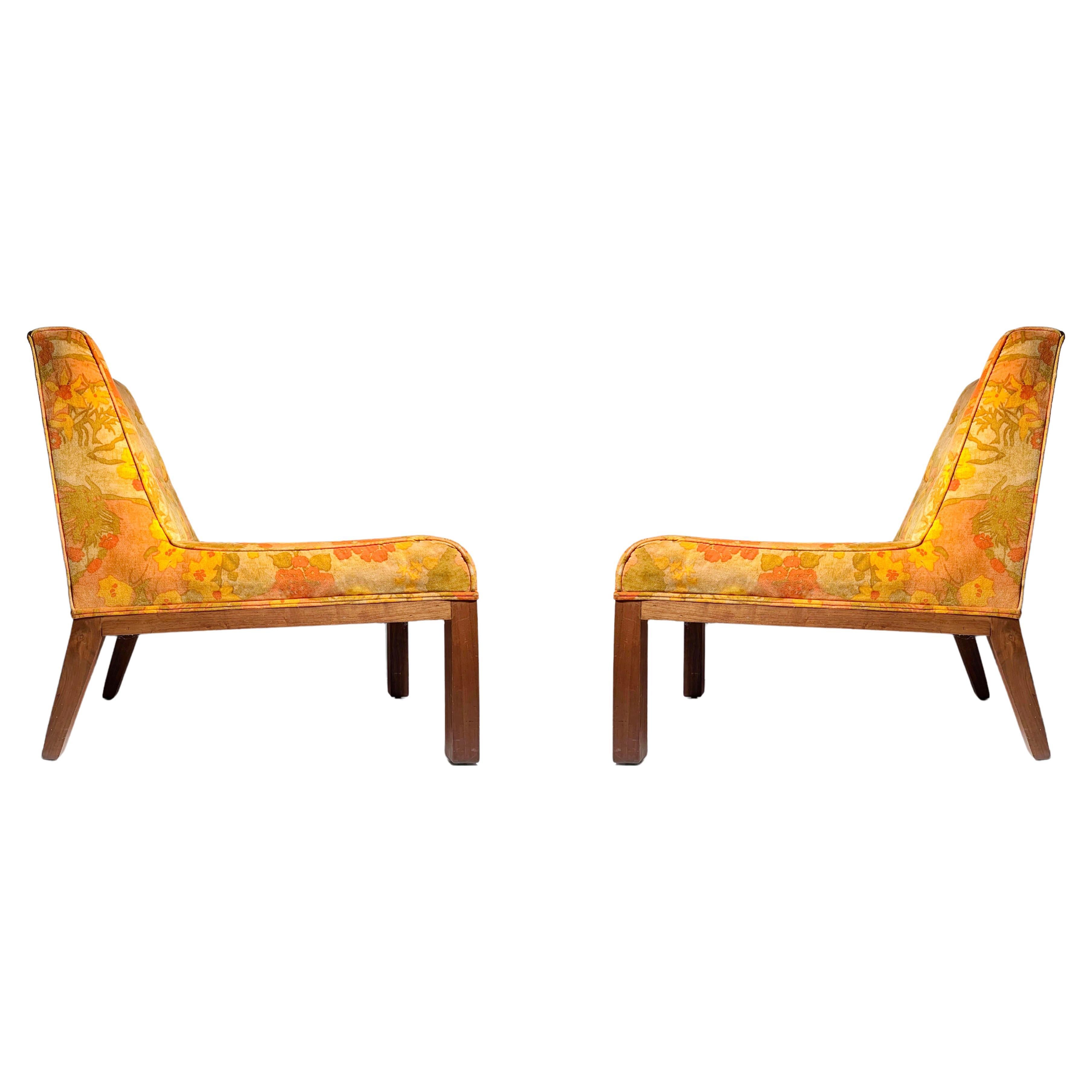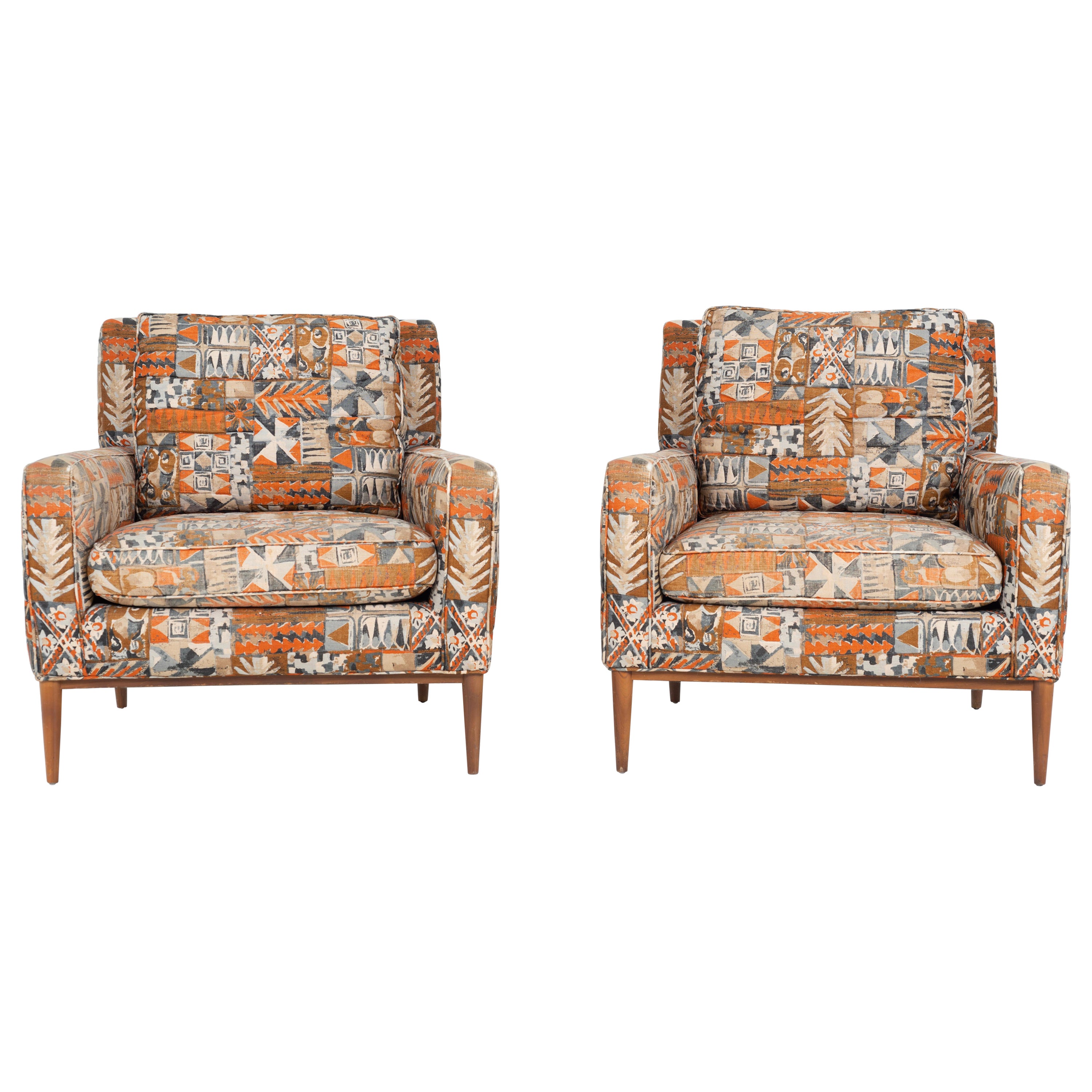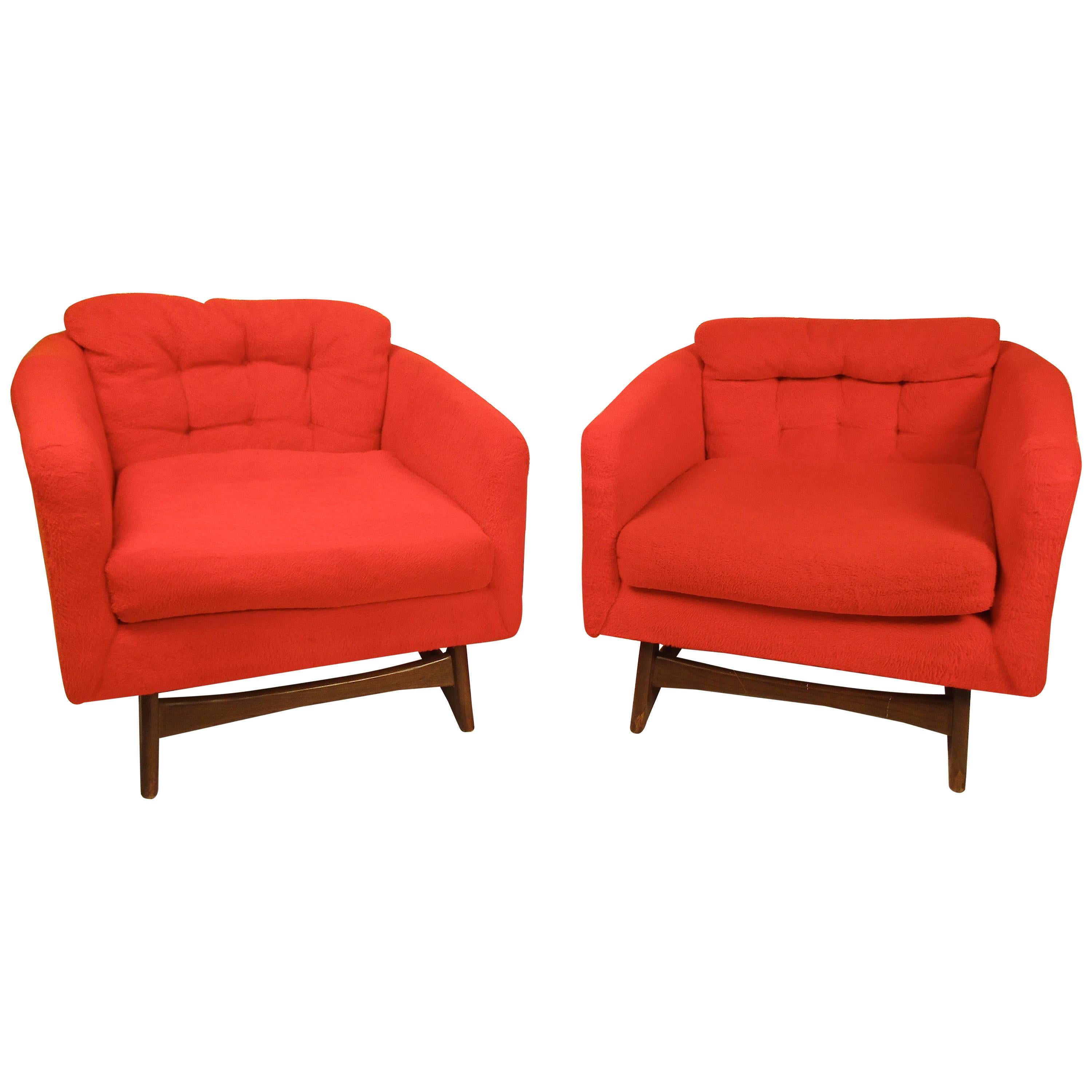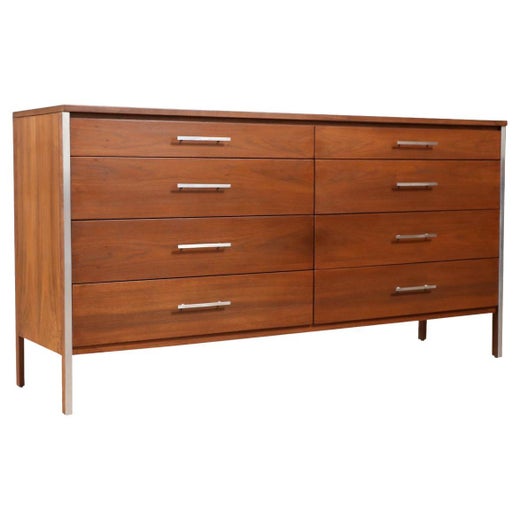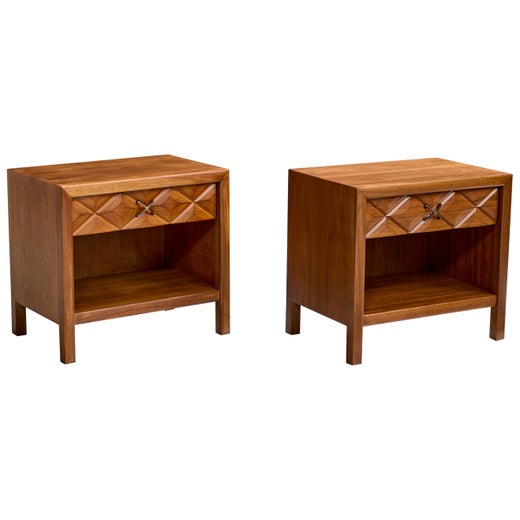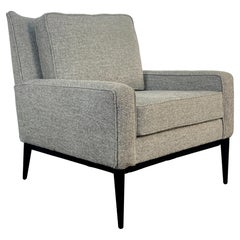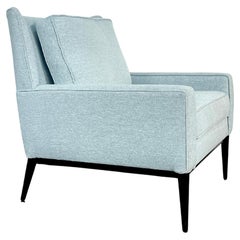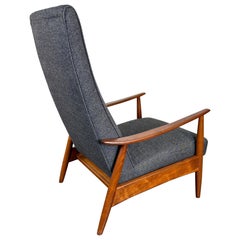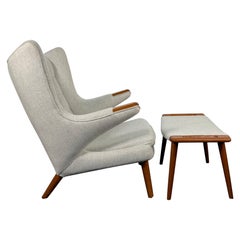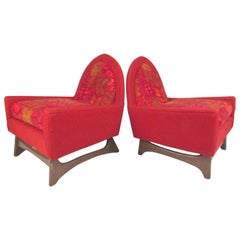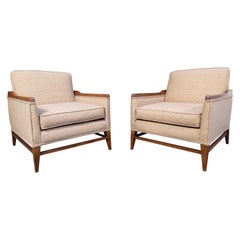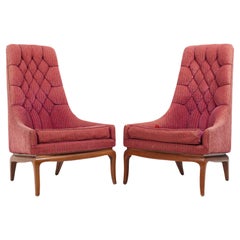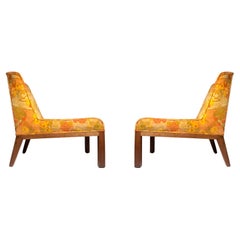Pair of Paul McCobb Lounge Chairs for Directional in Jack Lenore fabric
About the Item
- Creator:Widdicomb Furniture Co. (Manufacturer),Paul McCobb (Designer)
- Dimensions:Height: 32.75 in (83.19 cm)Width: 29.75 in (75.57 cm)Depth: 29 in (73.66 cm)
- Style:Mid-Century Modern (Of the Period)
- Materials and Techniques:
- Place of Origin:
- Period:
- Date of Manufacture:Circa 1960's
- Condition:Refinished. Wear consistent with age and use. Minor fading. The fabric on this pair of chairs is in good vintage condition. It is so rich and lovely. No holes, rips or tears. We have restored the walnut legs and made sure the chairs are structurally sound.
- Seller Location:San Diego, CA
- Reference Number:1stDibs: LU6417242179532
Paul McCobb
The single aesthetic attribute of vintage Paul McCobb furniture is that the designer completely forsook ornament — his pieces have no flourishes. And yet, because they are honest — McCobb’s chairs, desks and dining tables are made of solid wood, usually maple or birch, often paired with frames and legs of wrought iron; the cabinets are traditionally scaled; the seating pieces have historic antecedents such as the Windsor chair — his mid-century modern work has warmth and presence.
You could call the Massachusetts-born McCobb a man of parts. As a furniture designer, his work combined the attributes of many of his now better-known peers.
Like the work of Bauhaus designers such as Ludwig Mies van der Rohe and Marcel Breuer, McCobb's furniture had purity of form and line. Like the designs of Florence Knoll and George Nelson and his associates, McCobb’s work was efficient and purposeful. And even like George Nakashima, he was adept at interpreting traditional forms, in particular those of chairs, for the 20th century.
More than any other designer besides Russel Wright, with his ubiquitous ceramic tableware, McCobb was arguably responsible for the introduction of modern design into middle-class American households — if for no other reason than that he designed the 1952 set for the original Today show.
McCobb, a repeat recipient of the Good Design Award from the Museum of Modern Art, also designed cohesive lines of furnishings, such as his best-known Planner Group, that gave homes an instant “look.” He designed for several companies, most notably Directional, which was home to McCobb’s Origami chair.
In 1949, in partnership with New York furniture salesman B.G. Mesberg, McCobb set up the Directional Furniture Company, a brand known to vintage mid-century modern furniture collectors everywhere. Directional opened its doors after McCobb created the high-end Directional Modern line of sofas distributed by the New York-based Modernage Company. Directional also produced designs by other legends such as Paul Evans and Vladimir Kagan.
As you can see from the offerings on 1stDibs, McCobb designs are the pin-striped suit, or the little black dress, of a decor: an essential.
Find vintage Paul McCobb credenzas, bookcases, nightstands and other furniture on 1stDibs.
Widdicomb Furniture Co.
Admirers of vintage mid-century modern furnishings likely recognize the Widdicomb Furniture Company name for the fruitful partnerships it forged with iconic designers such as Frank Lloyd Wright, T.H. Robsjohn-Gibbings and Mario Buatta. But there is more to the Widdicomb story than the albeit quite covetable sofas and bedroom furniture it produced during the middle of the 20th century.
A wealth of pine and oak forests rendered Grand Rapids, Michigan, a logging center during the 1800s, and it eventually gained recognition for its furniture industry. The American city became a destination for furniture makers who hailed from across the United States and beyond. Furniture maker George Widdicomb emigrated from England to the United States in 1845, eventually setting up a cabinet shop in Syracuse, New York, before moving west to Grand Rapids. There, he opened a shop with his four sons, including John Widdicomb, whose name would help carry the family legacy into the 20th century.
The Widdicomb shop in Grand Rapids prospered, as the patriarch’s formal English training allowed him to produce pieces with superior craftsmanship compared to those of his competitors. Although the Civil War halted business and took the life of one of the Widdicomb brothers, the family’s survivors would start anew as Widdicomb Brothers and Richards, soon renamed the Widdicomb Furniture Company.
John Widdicomb, however, split from the family business in 1897 to create the John Widdicomb Company, where he would go on to focus on Louis XV- and French Provincial-style furnishings. Chairs made in these styles have distinct characteristics, such as floral motifs carved in the frames and gently angled backrests. John's company also remained a family affair: The founder’s son, Harry, assumed control of the company when his father died in 1910, while John's nephew Ralph Widdicombe — who retained the English spelling of his last name and joined the John Widdicomb Company at its start — designed every single piece of the offerings at his uncle's manufacturing outfit until he retired in 1951. Ralph was an internationally distinguished furniture designer whose modern mahogany bedroom suite won first prize at the Paris Exposition in 1900.
The original iteration of Widdicomb, which was helmed by John's older brother William while John ran his own brand, had shifted from making period revival styles of furniture, such as Georgian and Chippendale, to manufacturing modern pieces in the late 1920s. Today vintage Widdicomb seating, tables and other pieces produced during the postwar years are particularly sought after by collectors of mid-20th-century furniture.
In 1959, master woodworker George Nakashima created his Origins collection for Widdicomb when the firm merged with Mueller Furniture Corporation and was known, for around 10 years, as Widdicomb-Mueller. Origins, a revered Shaker-influenced group of nightstands, upholstered lounge chairs, dining-room tables and more, saw Nakashima working with woods like Carpathian elm and laurel in his Pennsylvania studio.
Eventually, the two Widdicomb companies would combine in 1970, operating under the name John Widdicomb Co.
In 2002, the business closed after more than a century of operations, and its assets were acquired by Stickley Furniture. Interestingly, it was not the first time Widdicomb and Stickley overlapped: In the final years of the 19th century, the companies opened a shared storehouse in London, while John Widdicomb and Albert Stickley would travel Europe together for the purposes of research.
Find vintage Widdicomb coffee tables, case pieces, dining chairs and more on 1stDibs.
- ShippingRetrieving quote...Shipping from: San Diego, CA
- Return Policy
More From This Seller
View AllVintage 1960s American Mid-Century Modern Armchairs
Upholstery
Vintage 1960s American Mid-Century Modern Armchairs
Upholstery
Vintage 1960s American Mid-Century Modern Armchairs
Walnut
Vintage 1950s Danish Scandinavian Modern Lounge Chairs
Wool, Oak, Teak
Vintage 1950s Danish Scandinavian Modern Lounge Chairs
Wool, Teak
Vintage 1960s American Mid-Century Modern Lounge Chairs
Upholstery, Acrylic, Mohair
You May Also Like
Vintage 1960s American Mid-Century Modern Lounge Chairs
Upholstery, Walnut
Mid-20th Century Mid-Century Modern Lounge Chairs
Fabric, Walnut
Vintage 1970s American Mid-Century Modern Lounge Chairs
Upholstery, Wood
Mid-20th Century American Mid-Century Modern Lounge Chairs
Wood
Vintage 1950s American Mid-Century Modern Lounge Chairs
Upholstery
Mid-20th Century Mid-Century Modern Lounge Chairs
Upholstery, Wood
